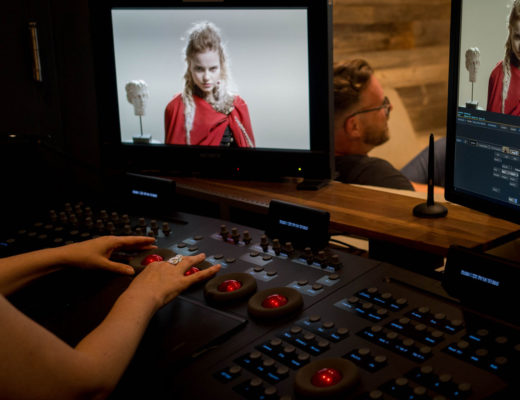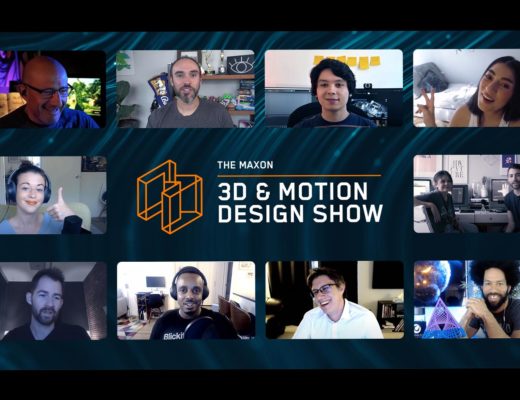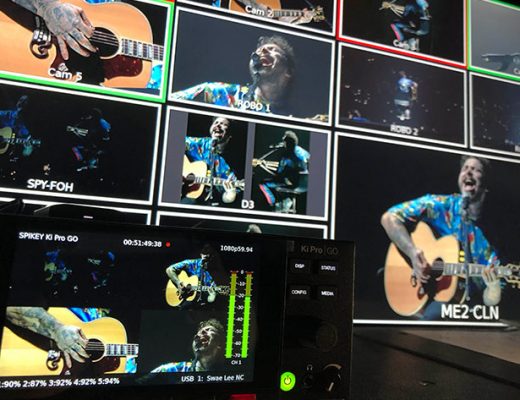Updated August 28th with archived presentation information
If you haven’t watched the video above, Why CG Sucks (Except It Doesn’t), I implore you to do so. In it, Freddie Wong breaks down why so many people have the wrong perception around CG, and how it’s being utilized in more ways and places than anyone realizes. Audiences and the industry as a whole are often critical of “bad” CG, but that interpretation is usually the fault of the filmmakers rather than the CG artists or even the CG imagery itself.
There were a number of questions that came to mind as I watched this video, so I tracked down Freddie as well as Lauren Haroutunian, Dean of the RocketJump Film School, to get some answers. After watching the video you’ll probably have plenty of your own questions, and you’ll be able to throw them out to both Lauren and Freddie during a live webinar that took place on Tuesday, August 25th. Kicking off at noon, PST, the ways in which filmmakers should be thinking of and using CG were a topic of discussion, but they also explored various other insights you can gather from the faculty at the RocketJump Film School.
Here’s a primer for what’s in store…
Do you think CG is often used a as a crutch by directors and even by writers? That rather than focus on creating something compelling in the narrative, they’re rely on CG to make something “cool”?
Lauren Haroutunian (LH): I think we need to get away from the idea that CG is a “crutch”. In the early days of film, the most popular movies were based on spectacle and illusion– making people vanish, reappear, change in size. We used stop motion to create a waking vampire, large matte paintings behind actors to send them to alien worlds, and double exposures or panes of angled glass to create ghosts. Visual effects have always been part of filmmaking, and in fact was what propelled much of early cinema forward. So the concept of leaning heavily on effects intended to wow the audience is not new or unique to CG. What we’re really referring to when we say “crutch” is our reliance on spectacle to carry a film, not what we use to create it.
Freddie Wong (FW): I think it’s important to remember that cinema has a history of using stuff as a “crutch” for compelling narrative, and it’s been happening in various forms since the beginning. From men in suits in monster movies to gigantic sets, there have been plenty of times when the focus hasn’t been on narrative, and CG is just another tool that has been abused in that same way.
The video does a great job of showcasing the incredible work done by CG artists, and that work ranges from creating explosions to animating Transformers. Why don’t CG artists get as much credit as they deserve for practical and and fantastic images and animations?
LH: If everyone is doing their job right, CG should be invisible and/or totally unnoticeable. You don’t want audiences to leave a theater remembering only the visual effects, because that means either the story was so bad that they weren’t paying attention, or the effects were so noticeable that they took away from the story.
But more than that, CG effects have long been written off as “cheating” because they are done digitally– look at the disqualification of Tron (1982) for the Special Effects category in the Academy Awards. There is still an unfortunate, prevailing attitude in the industry that devalues CG and VFX artists and studios, while at the same time misunderstanding what it is they do, how they do it, and what it takes to do it well.
Right now, often whoever can do it the fastest and cheapest gets the work, which is not the ideal environment for creative risk-taking, growth or artistic innovation. There is also a lot of interesting dialogue on CGI as an art form that we should keep paying attention to… the Oscar win for Cinematography for James Cameron’s almost completely CG film Avatar started an interesting discussion on that front.
Some of the negative feedback around CG seems to be the impetus behind statements like, “You wanted it to be legitimate. Building as much as we could was a mandate,” which a certain director said about the focus on practical elements in the new Star Wars movie. J.J. Abrams knows what he’s doing, but how do you see that kind of mentality impacting both filmmakers and audiences?
LH: This bothers me a bit. Practical effects are not inherently “more legitimate” than CG effects on their own. They are different tools– it’s how and why you use them. If you execute either of them poorly, neither will come across as “legitimate” for that movie. But what really worries me about this attitude is that CG and practical aren’t seen as complimentary; that they can’t be equally advantageous, just in different ways.
The combination of CGI and practical can create some of the most beautiful, jaw-dropping imagery and effects in film. It’s the combination, I’ve found, that often brings a little bit of the “how did they do that?” magic of the spectacle back. Even here, JJ says “building as much as we could.” Most of the new Star Wars will still be touched or created by computer generated VFX and animation, and I’m upset that this fact is ignored, or worse: portrayed as a necessary evil rather than another vital creative tool that can help develop a rich and interesting looking universe.
But when push comes to shove, if the story isn’t good, JJ’s still out of luck. The much hated Star Wars prequels had a lot of well-executed practical elements that were overlooked and dismissed by bored, frustrated audiences. In fact, audiences were so disappointed in the films that they assumed even the practical miniatures and set pieces of the prequels were computer generated, and continued to chalk up the lifelessness of the films to an over-reliance on “lifeless” computer effects.
So even if you look at the sheer number of practical effects and sets they used on the Phantom Menace– it still didn’t make the movie any better.
That filmmakers need to play to the strengths computers currently possess is a major point in the essay, but it makes me wonder how those strengths will continue to progress and evolve. Will filmmakers eventually be able to forget about casting actors altogether once computers can render human being flawlessly?
FW: I think it’ll only be a matter of time before we cross the uncanny valley when it comes to human beings, but I doubt CG will fully replace actors. I can see a blend of performance capture and CG in the near future being used, but only in instances where it would be prohibitively difficult or otherwise impossible to do otherwise. The Planet of the Apes movies, for example, are already doing that to create CG apes with emotive performances to great effect. Off the top of my head, I could see potentially reanimating deceased celebrities, or allowing actors to play younger or older versions of themselves (which was already done to an extent in Benjamin Button). Fully CG characters, driven off of actors who could look like anything, may be possible, but is likely a ways off yet, but still – you’d have to cast someone.
LH: The funny thing is, we already have films with entirely animated characters. Pixar puts out some of the best films in the world, with some of the best animation in the world. But you don’t see every studio dropping their live action movies to do animation because it’s clearly better or more efficient to animate characters and environments instead of hiring actors. This isn’t due to a failure to render humans realistically, or waiting for the technology to arrive, or a lack of success on animation’s part, but because character animation is its own beautiful, distinct art– the same way film acting or stage acting is its own art. Instead of a single actor bringing emotion, action, expression, and voice to a character while working with their director, an entire team of artists (still including the actor!) creates it. Both methods have created compelling and relatable characters with great success, and one is not inherently better than the other. But for a specific film, one might convey the story in a more powerful way. And that’s what matters.
Beyond that, the idea that CG eventually could completely replace entire jobs and artistic practices in filmmaking hinges on the assumption that those art forms are disposable enough that all their inherent value is simply erased in the face of newer technology. On the flip side of that, this also diminishes CG as its own art, relegating it to replacing existing art forms that it can’t live up to, instead of using it creatively in new unique ways, or in tandem with the old methods to encourage innovation on both ends.
Since this video is just part of your ongoing series of visuals essays from the RocketJump Film School, can you give us any teases about what else you have in store?
LH: When it comes to creating video essays, one of the main goals is to demystify how cinematic storytelling works, and to familiarize filmmakers and movie lovers alike with the many different tools that are available. But more to the point, we want to delve into not just how these concepts and tools are used, but why. One video essay I’m looking forward to releasing is by our director and editor, Joey Scoma, about the significance of something as simple as a “cut” in film editing. We are also working on a larger discussion about camera movement.
FW: I think one of the strengths we bring to the table when it comes to our essays is that they aren’t coming from a purely academic point of view – across our team, we have the benefit of a little experience in the film industry, which can help inform our discussion and ground what we’re saying in some of the practical realities of filmmaking itself. One that I’m particularly excited about is a discussion about the importance of geographic legibility in action sequences, and how mere geography can be an incredibly compelling storytelling tool.
That’s just a brief illustration of the insights and advice that was on display during the live webinar. Listen in to hear what else Freddie and Lauren have to say about filmmaking, CG and plenty more.

Filmtools
Filmmakers go-to destination for pre-production, production & post production equipment!
Shop Now













